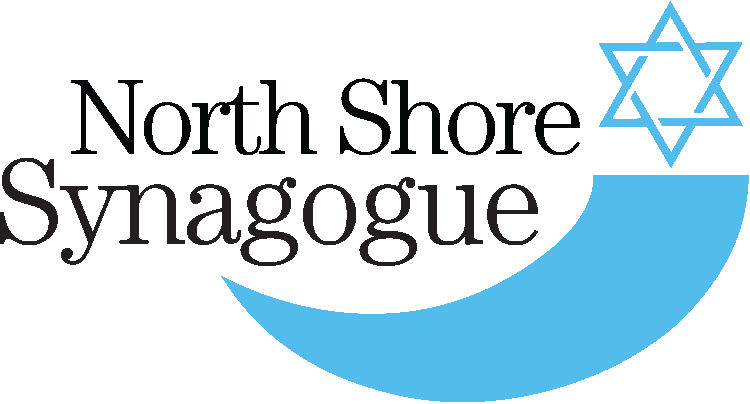 This past May I had the pleasure of attending the 77th Cantors Assembly Conference in Minneapolis, MN. It was an amazing experience to join with my colleagues from across the country, Canada, and South America. At the conference I was able to participate in concerts, teach, and speak. It truly was an opportunity for renewal of music and spirituality and to get to see what my Colleagues from other places are doing and singing within their communities. It also was an opportunity to hear old “traditional” melodies in a new way and to learn new music together. One would ask why is it important to create new melodies or even reinvigorate older melodies? We can find the answer to this in our Torah and in the teachings of past Rabbis and Hazzanim.
This past May I had the pleasure of attending the 77th Cantors Assembly Conference in Minneapolis, MN. It was an amazing experience to join with my colleagues from across the country, Canada, and South America. At the conference I was able to participate in concerts, teach, and speak. It truly was an opportunity for renewal of music and spirituality and to get to see what my Colleagues from other places are doing and singing within their communities. It also was an opportunity to hear old “traditional” melodies in a new way and to learn new music together. One would ask why is it important to create new melodies or even reinvigorate older melodies? We can find the answer to this in our Torah and in the teachings of past Rabbis and Hazzanim.
Shiru La-Doshem Shir Chadash – “Sing to G-d a song that is new” (translation from Sidur Simhat Y’Hoshu’a – the Schottenstein Edition Page 64). Throughout the Torah and in all of our prayers the Hebrew Word Shir (or Shirim plural) is translated as “song(s)”. The torah tells us that it was important for us to sing praise to G-d, whether it be the Hazzan singing on behalf of the Congregation, or as a community, joining the Hazzan (Ba’al T’fillah – the leader of prayer) in praise.
We find examples of music throughout the history of Jewish worship. Even the chanting of our sacred texts is done in a melodic, sweet way to convey the message of G-d to the people and turn our thoughts, prayers, hopes, and desires to G-d. You may wonder where some of the music came from in our synagogue liturgy. In early times it was based on what the Temple choir would sing in Jerusalem. “The earliest synagogal music was based on the same system as that used in the Temple in Jerusalem. According to the Talmud, Joshua ben Hananiah, who had served in the sanctuary Levitical choir, told how the choristers went to the synagogue from the orchestra by the altar…” (source: https://en.wikipedia.org/wiki/History_of_religious_Jewish_music) .
During the time of the first and second Temples, temple music was the center of all music in our society. After the fall of the Temples and the removal of Jews from the promised land, it was decided that all music would be banned. Though eventually this ban was lifted for religious purposes and music was added back into worship services. Eventually music (including instruments) was allowed at various celebrations including weddings and other simchas that were not on Shabbat or Holy Days.
When liturgical poems (Piyyutim) were added to the worship service, fixed melodies used on a regular basis began to appear in Synagogue music and prayers which helped people to learn the prayers of the services. The Ba’al T’filah (the Cantor / Hazzan) would lead communities in prayer, helping each person learn each prayer and gain a deeper understanding of the service.
Singing has always been vital to praising G-d. We see this in the Torah, notably in the Song of the Sea, when, after crossing the Sea of Reeds and the waters rush over the Egyptian Army, the Israelites are led in song praising the triumph of G-d. Even in the N’Vi’im (HafTorah), our prophets encouraged singing to G-d for the great things that he has done for us. King David was known as the “Sweet Singer of Israel” for his talents with music, lyrics and musical instruments. “Music is the most immaterial and ephemeral of all art forms. We can’t see music, we can’t grasp it in our hands, but we can feel it working through us and the world. As such, music represents our connection to the divine, to each other, to everything.” (source: https://www.myjewishlearning.com/article/why-music-is-fundamental-tojewish-prayer/). If we look to the Gematria, the number value for song (Shirah) and prayer (tefillah) are identical. One could say that to make the most of our prayers they should be sung. In the Talmud in section Berakoht 6a it is noted “Where there is song, there is prayer…” (ibid). Prophets like Elisha were able to prophesize when music was played. When we teach our children the Sh’ma, we teach it with a melody. This simple tune has two functions. First, the idea that music helps the human brain by reaching areas that we rarely use and secondly, it helps make us better, deeper, thinkers. When we sing a prayer, we deepen it’s meaning and it becomes something more, something holy, something spiritual that puts us into a more thoughtful frame of mind as we pray.
When we use our voices and instruments to pray, we become united as a group of people sharing in not just the notes and the words, but in a collective spiritual elevation. Think of how you feel when you sing the Sh’ma out loud, or how much fun it is to sing a chorus of “Hava Narisha, Rash, Rash, Rash!” to the Chag Purim song during Purim. Each of our responses to music is individual to us, however through music we have the ability to connect with each other. We also connect with G-d, through the melodies of the T’fillah and the notes of the song which are sung. As a Hazzan, I try through the artistry of my profession to help create a feeling of meditation and of the majesty of the moment. Each community develops a distinct voice over time and as I have gotten to know and understand the voice of our community, we have been able to create moments in prayer that are truly spiritual and authentic.
May the summer months bring us all a sense of calm and peace, and may our voices join together in spiritual song and harmonies.
Musically Yours in Peace,
Cantor Steven Hevenstone

Community, Spirituality and Music (Cantor Hevenstone)
July 30, 2024 by nssadmin • Blog
Shiru La-Doshem Shir Chadash – “Sing to G-d a song that is new” (translation from Sidur Simhat Y’Hoshu’a – the Schottenstein Edition Page 64). Throughout the Torah and in all of our prayers the Hebrew Word Shir (or Shirim plural) is translated as “song(s)”. The torah tells us that it was important for us to sing praise to G-d, whether it be the Hazzan singing on behalf of the Congregation, or as a community, joining the Hazzan (Ba’al T’fillah – the leader of prayer) in praise.
We find examples of music throughout the history of Jewish worship. Even the chanting of our sacred texts is done in a melodic, sweet way to convey the message of G-d to the people and turn our thoughts, prayers, hopes, and desires to G-d. You may wonder where some of the music came from in our synagogue liturgy. In early times it was based on what the Temple choir would sing in Jerusalem. “The earliest synagogal music was based on the same system as that used in the Temple in Jerusalem. According to the Talmud, Joshua ben Hananiah, who had served in the sanctuary Levitical choir, told how the choristers went to the synagogue from the orchestra by the altar…” (source: https://en.wikipedia.org/wiki/History_of_religious_Jewish_music) .
During the time of the first and second Temples, temple music was the center of all music in our society. After the fall of the Temples and the removal of Jews from the promised land, it was decided that all music would be banned. Though eventually this ban was lifted for religious purposes and music was added back into worship services. Eventually music (including instruments) was allowed at various celebrations including weddings and other simchas that were not on Shabbat or Holy Days.
When liturgical poems (Piyyutim) were added to the worship service, fixed melodies used on a regular basis began to appear in Synagogue music and prayers which helped people to learn the prayers of the services. The Ba’al T’filah (the Cantor / Hazzan) would lead communities in prayer, helping each person learn each prayer and gain a deeper understanding of the service.
Singing has always been vital to praising G-d. We see this in the Torah, notably in the Song of the Sea, when, after crossing the Sea of Reeds and the waters rush over the Egyptian Army, the Israelites are led in song praising the triumph of G-d. Even in the N’Vi’im (HafTorah), our prophets encouraged singing to G-d for the great things that he has done for us. King David was known as the “Sweet Singer of Israel” for his talents with music, lyrics and musical instruments. “Music is the most immaterial and ephemeral of all art forms. We can’t see music, we can’t grasp it in our hands, but we can feel it working through us and the world. As such, music represents our connection to the divine, to each other, to everything.” (source: https://www.myjewishlearning.com/article/why-music-is-fundamental-tojewish-prayer/). If we look to the Gematria, the number value for song (Shirah) and prayer (tefillah) are identical. One could say that to make the most of our prayers they should be sung. In the Talmud in section Berakoht 6a it is noted “Where there is song, there is prayer…” (ibid). Prophets like Elisha were able to prophesize when music was played. When we teach our children the Sh’ma, we teach it with a melody. This simple tune has two functions. First, the idea that music helps the human brain by reaching areas that we rarely use and secondly, it helps make us better, deeper, thinkers. When we sing a prayer, we deepen it’s meaning and it becomes something more, something holy, something spiritual that puts us into a more thoughtful frame of mind as we pray.
When we use our voices and instruments to pray, we become united as a group of people sharing in not just the notes and the words, but in a collective spiritual elevation. Think of how you feel when you sing the Sh’ma out loud, or how much fun it is to sing a chorus of “Hava Narisha, Rash, Rash, Rash!” to the Chag Purim song during Purim. Each of our responses to music is individual to us, however through music we have the ability to connect with each other. We also connect with G-d, through the melodies of the T’fillah and the notes of the song which are sung. As a Hazzan, I try through the artistry of my profession to help create a feeling of meditation and of the majesty of the moment. Each community develops a distinct voice over time and as I have gotten to know and understand the voice of our community, we have been able to create moments in prayer that are truly spiritual and authentic.
May the summer months bring us all a sense of calm and peace, and may our voices join together in spiritual song and harmonies.
Musically Yours in Peace,
Cantor Steven Hevenstone